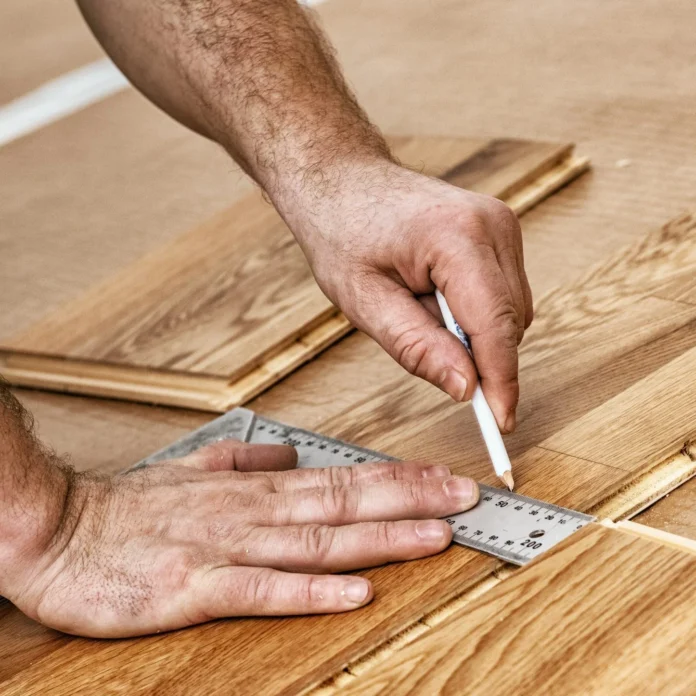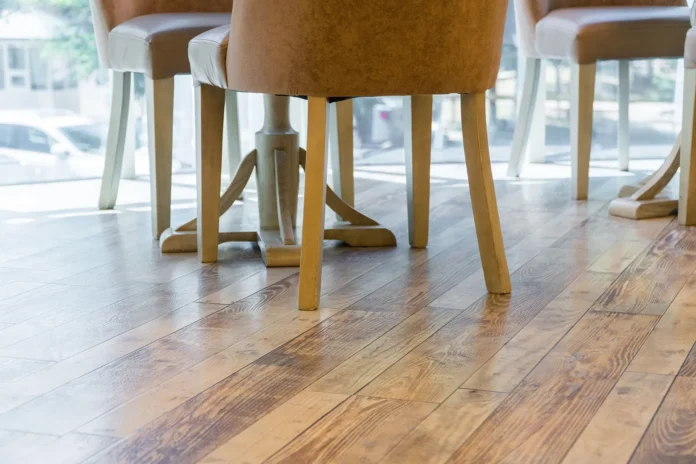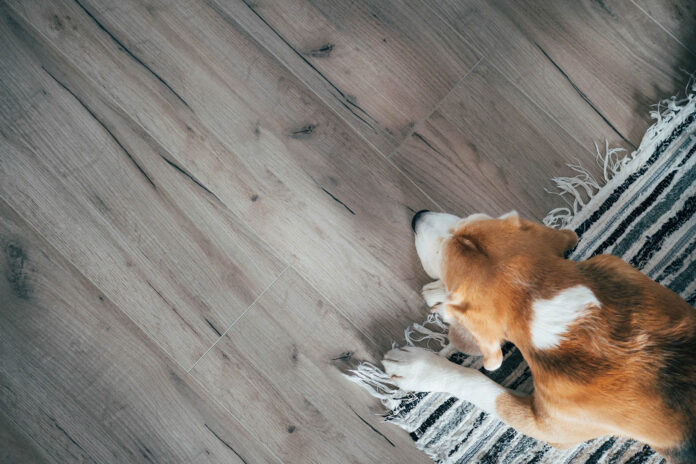Entering a new build home, the scent of fresh paint and brand-new fixtures can fill you with a sense of anticipation. Yet beneath the visual allure, potential problems often hide, including those lurking beneath your feet – your floor. To guide you through these often-overlooked issues, we’ve constructed this comprehensive guide. We’ll explore the seven most frequent flooring hitches in new build homes and furnish you with advice to remedy them.
1. Uneven Subfloor and Floor Joists
The first reason why you should always conduct a thorough snagging inspection is very annoying and frustrating. Beneath the aesthetic surface of your flooring, the subfloor and floor joists play a crucial role in stability. If these foundational elements aren’t level, your finished floor will likely follow suit. This unevenness can cause discomfort underfoot, contribute to quicker wear, and even cause instability.
Consider this; you wouldn’t build a house on a slope without proper leveling, so why would flooring be any different? Engage a trusted professional to assess the subfloor and joists in the initial stages of construction. They can confirm the levelness of the subfloor, evaluate the integrity of the joists, and if needed, rectify any issues. This preemptive step could save you from hefty repair bills down the line.
2. Incorrect Flooring Installation

Installation errors are often culprits behind problematic floors. Be it wrong adhesive use, incorrect underlayment, or poorly laid tiles; such faults can all result in an uneven surface and longevity issues. So, before giving the green light to your contractors, ensure they have the necessary experience and training.
During the installation phase, be proactive. Insist on regular updates from the contractor about the process, and don’t be shy about asking questions. After all, it’s your home, and you have every right to be involved in the process. Remember that overseeing doesn’t mean micromanaging but keeping yourself informed and engaged.
3. Flooring Material Quality Issues
The charm of high-quality flooring materials is undeniable, and their longevity makes them a worthwhile investment. However, selecting inferior-quality materials can lead to premature wear and tear, discoloration, and other issues that can detract from your home’s beauty.
Do your research to ensure you’re purchasing the best materials within your budget. Sometimes, this might mean waiting a little longer or reallocating resources, but it’s usually worth it. Consider this an investment into your home’s future and your comfort, a decision that’s about more than immediate gratification.
4. Moisture and Water Damage
Water, while necessary for life, is not always a friend to your floors. Excess moisture can warp wood, cause mold under carpets, and lead to structural damage. A leaking appliance or a simple spill can quickly become a homeowner’s nightmare if not addressed promptly.
The key is prevention and prompt action. Waterproofing measures during installation, like the use of moisture barriers, can prevent groundwater from seeping into your floor. Regular checks for leaks in appliances and a swift clean-up of spills can protect your floor from water damage. In the event of serious water damage, hiring a professional restoration service can save your flooring and your pocket in the long run.
5. Cracks and Gaps in Flooring

Over time, even the best-installed flooring can develop cracks or gaps. Whether due to natural house settling, changes in temperature and humidity, or just plain wear and tear, these imperfections can become bothersome and unsightly.
Instead of despairing, arm yourself with a pragmatic approach. Small gaps and cracks can often be filled in DIY style with the right tools and a little patience. For more significant issues, consider enlisting a professional’s help. Remember, treating these issues promptly can prevent more serious damage down the line.
6. Noisy or Squeaky Floors
The quiet serenity of your home can quickly be shattered by the annoying squeak of your floors. Often a symptom of loose boards, uneven subfloors, or the normal settling process, squeaky floors can grate on your nerves and diminish the tranquility of your home.
Don’t resign yourself to a cacophony of floorboards. Investigate the noise source to understand its cause better. Minor squeaks can sometimes be remedied with specialized lubricants or tightening a few screws. For persistent or widespread noise, a professional evaluation might be warranted.
7. Lack of Insulation and Energy Efficiency
Flooring, believe it or not, plays a significant role in home insulation and energy efficiency. Cold floors can increase your heating needs, while a hot floor can ramp up your air conditioning usage. Unfortunately, many new builds overlook this important aspect of flooring.
Fortunately, addressing this snag is relatively straightforward. A professional can assess your floor’s insulation, and if necessary, recommend and install additional underfloor insulation. Not only will this make your home more comfortable, but it can also contribute to reduced energy costs, making it a win-win solution.
Flooring Maintenance and Cleaning Tips
To keep your flooring in the best condition, regular maintenance and proper cleaning are essential. Use manufacturer-approved cleaning products to prevent unintended damage. Regularly inspect your floors for early signs of wear or damage – the sooner you catch a potential issue, the easier it is to rectify.
Keeping your flooring clean doesn’t just mean addressing dirt and spills. It’s also about reducing wear by using protective pads under furniture and keeping pets’ nails trimmed. By incorporating these tips into your routine, you can prolong the lifespan of your flooring and keep it looking its best.
Assessing and Repairing Subfloor Damage
Navigating the rocky terrain of subfloor damage might seem daunting, but don’t despair. The first step is diagnosis – hire a professional to evaluate your subfloor’s integrity. They’ll probe for signs of water damage, rot, or termite activity. Once you know what you’re dealing with, repairs can be planned. For minor issues, a professional might recommend patching or reinforcing affected areas. More significant damage could necessitate a complete subfloor replacement. This might seem like a costly setback, but think of it as an investment in your home’s structural integrity and peace of mind. After all, a house, much like a tree, is only as strong as its roots.

Final Reflections
The allure of a new build home can sometimes mask the potential pitfalls lurking underfoot. The road to the perfect floor might be fraught with challenges, but with foresight, professional help, and a dash of patience, these hurdles can be overcome. As you step across the threshold of your new home, let the floor beneath your feet be a source of comfort and pride, not headaches and hassle.




